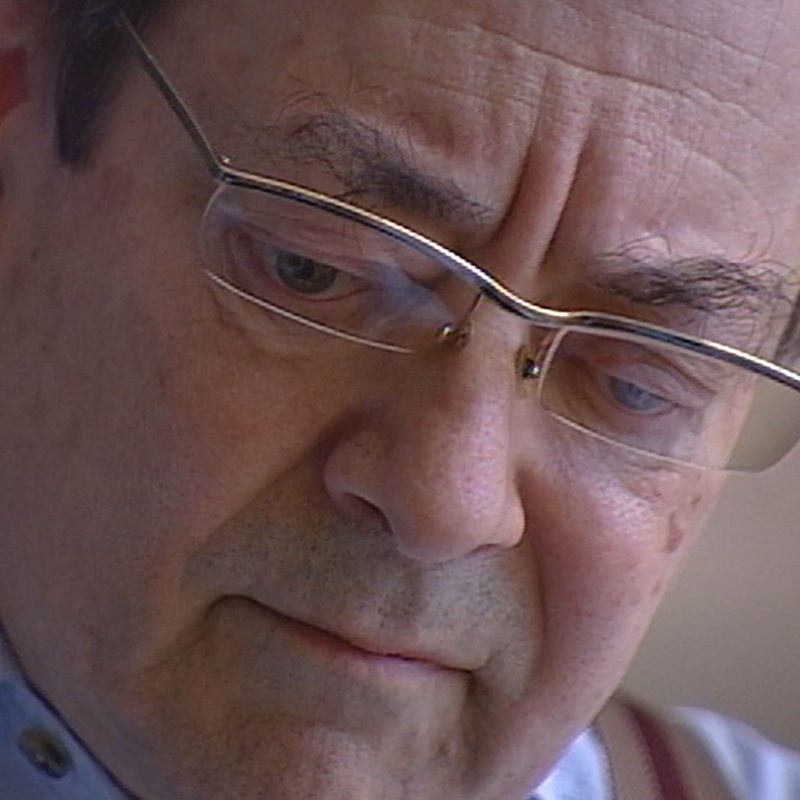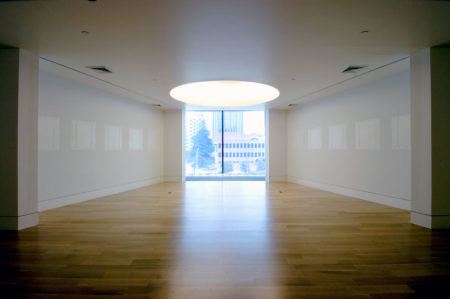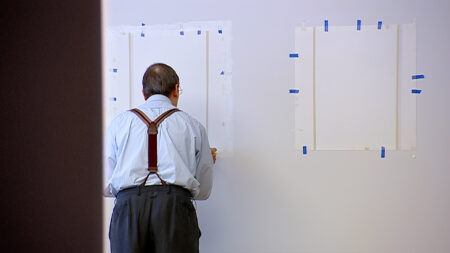Continue playing
(Time remaining: )
Play from beginning
Continue playing "{{ controller.videos[controller.getVideo(controller.currentVideo)].segmentParentTitle}}"
{{controller.videos[controller.getVideo(controller.currentVideo)].title}} has ended.
PossibilitiesRobert Ryman
Neither abstract nor entirely monochromatic, Robert Ryman’s paintings are paradoxically realist according to the artist’s own lexicon. For over fifty years, Ryman has been experimenting with painting, constantly modifying his technique to resist the temptations of artistic routine.
“My painting is not limited at all,” Ryman insists. “I have many possibilities of approach. The reason I have that, I think, is because I’m not limited by a certain narrative that I want to get across with paint, or symbolism, or some kind of story that I need to tell… I’m not limited because I don’t have any of those things to stop me from experimenting.”
Credits
Producer: Susan Sollins & Nick Ravich. Camera: Bob Elfstrom & Mead Hunt. Sound: Tom Bergin & Roger Phenix. Editor: Monte Matteotti. Artwork courtesy: Robert Ryman. Thanks: The Pennsylvania Academy of the Fine Arts.
Closed captionsAvailable in English, German, Romanian, Italian, Japanese, Korean, Chinese, Italian
Through the Art21 Translation Project, multilingual audiences from around the globe can contribute translations, making Art21 films more accessible worldwide.
Interested in showing this film in an exhibition or public screening? To license this video please visit Licensing & Reproduction.
Robert Ryman’s work explodes the classical distinctions between art as object and as surface—between sculpture and painting, between structure and ornament—emphasizing instead the role that perception and context play in creating an aesthetic experience. Ryman isolates the most basic of components (material, scale, and support), enforcing limitations that allow the viewer to focus on the physical presence of the work in space. Since the 1950s, Ryman has used primarily white paint on a square surface while harnessing the nuanced effects of light and shadow to animate his work. Neither abstract nor entirely monochromatic, Ryman’s paintings are paradoxically “realist” according to the artist’s own lexicon.



